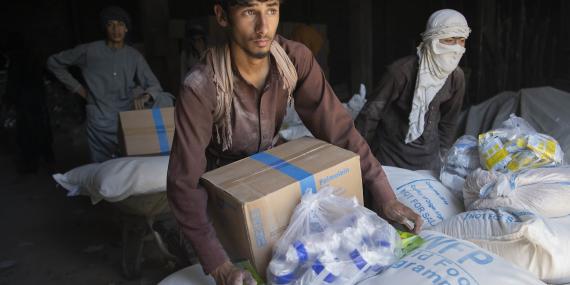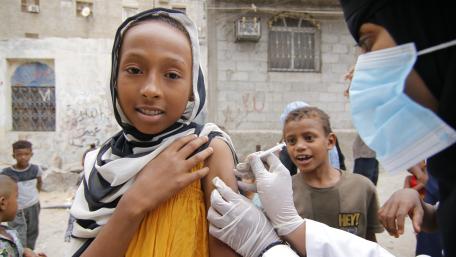Charikar, Afghanistan
Flood victims receive a package of food from WFP. On 26 August 2020, flash floods occurred across the Parwan province, washing away hundreds of homes, killing several dozen people and injuring hundreds more. WFP/Massoud Hossaini
People reached with humanitarian aid
In 2020, more than 98 million people were reached, which accounts for 70 per cent of the total population targeted in 25 Humanitarian Response Plans, i.e. 6 per cent more than in 2019.
People reached with humanitarian aid (2020)
The figures below represent achievements by humanitarian partners in 2020. They might not reflect the total number of people reached in each case, but give a strong indication of the magnitude of the collective humanitarian response.
Health and Nutrition
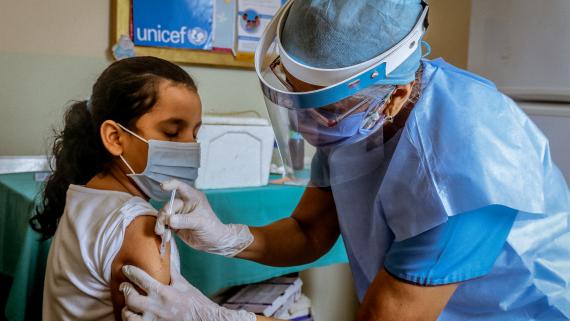
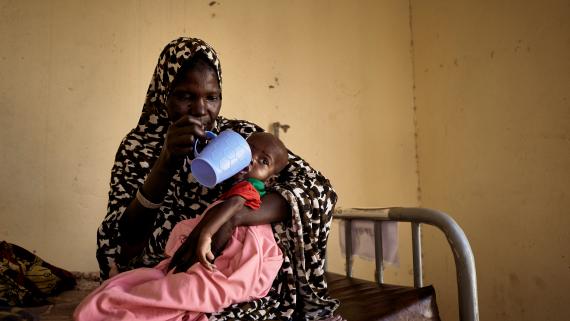
Venezuela / Mali
Throughout 2020 most countries experienced a disruption in the provision of health services, threatening hard won gains particularly in the fight against communicable diseases. Humanitarians stepped in to help those most vulnerable and support the continuation of essential services.
UNICEF/William Urdaneta, OCHA/Michelle CattaniOver 10 million women and young people reached with life-saving sexual and reproductive health care and services to address GBV.
2,412 health facilities in 52 countries provided emergency obstetric care.
3.4 million children vaccinated against measles and 6.3 million children vaccinated against polio.
Over 8,5 million doses of cholera vaccine distributed in seven countries.
Over 49 million people vaccinated against yellow fever in six African countries (Ethiopia, Ghana, Nigeria, South Sudan, Sudan and Uganda).
Food, NFI, Shelter and WASH
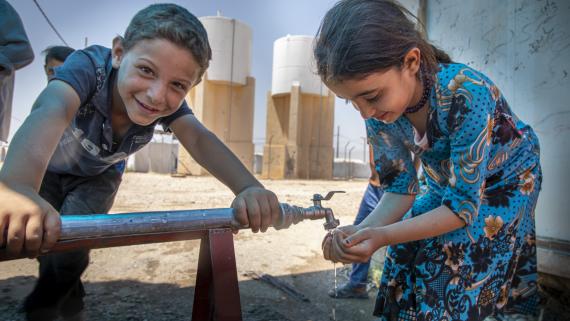
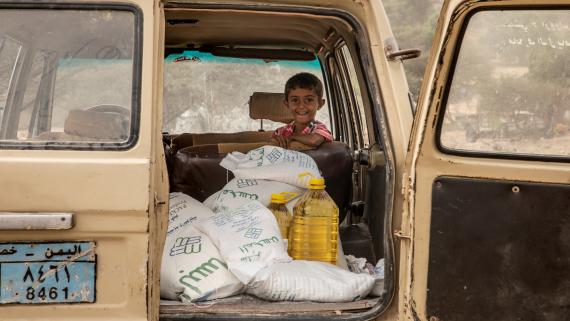
Iraq / Yemen
Pandemic-related movement restrictions disrupted supply chains and the knock-on effects on livelihoods increased food insecurity. Working to overcome movement restrictions, humanitarians provided life-saving food assistance for millions.
UNHCR/Rasheed Hussein, WFP/Ayman Fuad96.9 million people received direct food assistance in the first nine months of 2020.
14.2 million people accessed safe water for drinking, cooking and personal hygiene.
$1.7 billion cash-based transfers to vulnerable people in 67 countries.
13 million people had livelihoods and food security protected in Horn of Africa thanks to desert locus control operations. This averted the loss of 1.5 million tonnes of crops, worth over $456 million and sufficient to feed almost 10 million people.
844,000 MT of food procured locally, with a value of $548 million.
Gender Equality and Preventing GBV
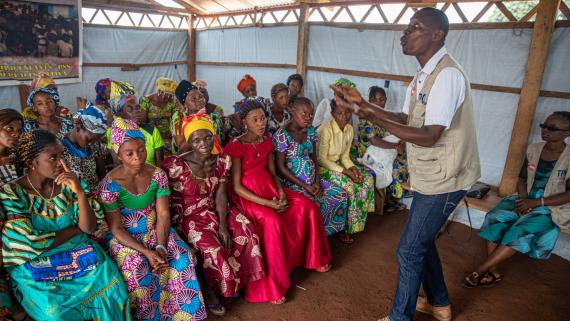
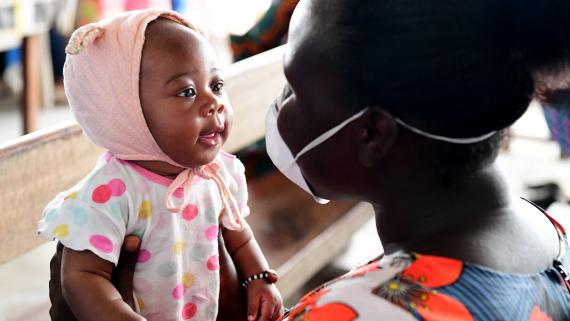
DRC / Côte d'Ivoire
One of the most insidious effects of COVID-19 containment measures has been a spike in gender-based violence (GBV). Building on previous work to tackle the gender inequality root causes of GBV, humanitarian actors enhanced their GBV prevention and mitigation efforts.
OCHA/Alioune Ndiaye, UNICEF/Frank Dejongh815,500 women and girls received reproductive health services.
2.8 million people in 47 countries reached with GBV services (including prevention, risk mitigation and response services).
In 2020, CERF allocated over $60 million to GBV-focused programmes.
CBPFs allocated $390 million to projects that intend to contribute to gender equality.
Protection and Education
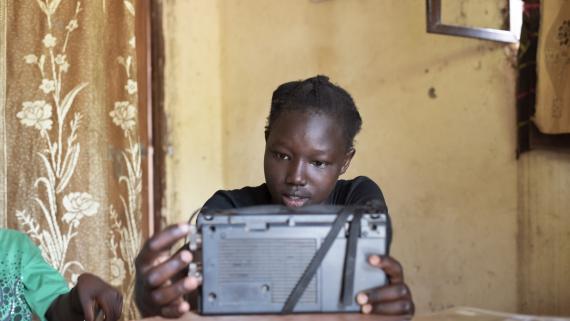
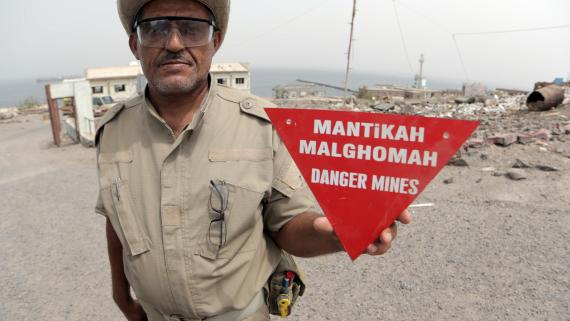
Sudan / Yemen
2020 saw a continuation of violent conflict, leading to protracted displacement. School closures through the year affected 91 per cent (1.6 billion) of students worldwide, diminishing educational opportunities and entry pathways for nutrition and protection programmes.
UNICEF/Helene Ryeng, OCHA/Matteo Minasi10.8 million people received protection services, including legal aid and referrals to GBV services and psychosocial support.
1.5 million children and caregivers accessed mental health and psychosocial support.
5,130 children were released from armed groups and accessed reintegration services.
26,390 unaccompanied and separated children accessed family-based care or other appropriate services.
5 million people benefited from Mine Action globally.
2.4 million children accessed formal or non-formal education, including early learning.
261.2 million children supported globally with distance/home-based learning to ensure continuous education despite the pandemic.
Localization
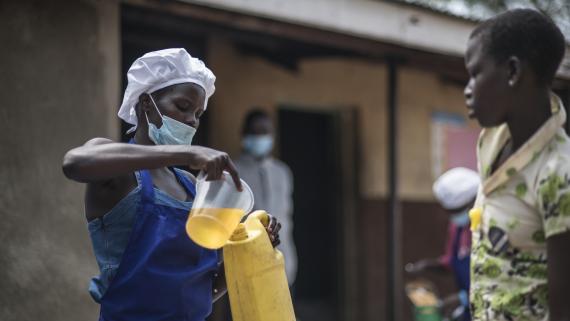
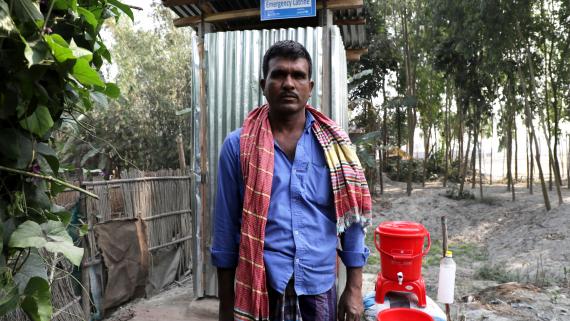
Uganda / Bangladesh
Local communities – including local business networks –play a prominent role in meeting humanitarian needs. The COVID-19 pandemic and its effects highlighted the advantages of response, recovery and coordination efforts led by local organizations.
WFP/Hugh Rutherford, OCHA/Anthony BurkeCOVID-19
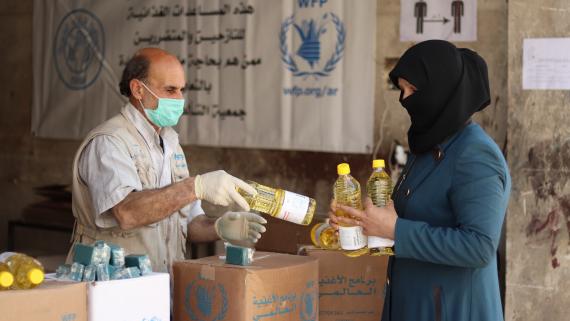
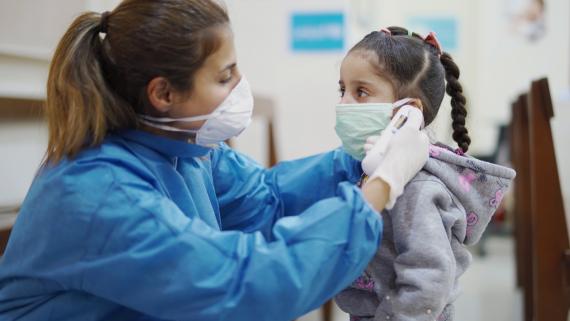
Syria / occupied Palestinian territories
COVID-19 aggravated existing vulnerabilities and created new humanitarian needs throughout 2020. Humanitarians demonstrated enormous will to stay and deliver, adapting their programming and providing a lifeline for the most vulnerable.
WFP/Khudr Alissa, UNICEF/Fouad ChoufanyOver 25,000 health and humanitarian personnel, from 397 organizations, have been transported on approximately 1,450 flights.
Over 100,000 m3 of critical COVID-19 cargo dispatched on behalf of 66 organizations to 171 countries.
33.1 million refugees, IDPs, and stateless received assistance. Of those people, 4.7 million refugees and IDPs received cash assistance.
3.93 million refugees accessed essential health services.
750,000 children and youth supported with distance or home-based learning.
Communities and their leaders in 262 cities across 37 countries supported in planning and improving access to facilities.
15 million people (44 per cent women) received livelihood support to counter the socioeconomic impact of COVID-19.
3 billion people reached through messaging on COVID-19 prevention and access to services.
73.7 million people received critical WASH supplies and services.
1.8 million healthcare workers provided with personal protective equipment.
74.8 million children and women receiving essential health-care services.
2.3 million health-care providers trained to detect, refer and manage COVID-19 cases.
74.7 million children, parents and primary caregivers provided with community-based mental health and psychosocial support.
22.6 million children and adults provided with a safe channel to report sexual exploitation and abuse.
45.5 million households benefitting from new or additional social assistance measures provided by Governments to respond to COVID-19 with UNICEF support.
References
- UNFPA, data as of end of October 2020.
- UNICEF, data as of mid-2020.
- WHO, data as of mid-November 2020.
- WHO, data as of mid-November 2020. All interventions were mounted despite the COVID-19 context, and the flash floods affecting Ethiopia and South Sudan at the time of the campaigns.
- UNICEF, results as of end-October 2020.
- WFP, data as of mid-November 2020. Note: The figure for direct food assistance received over the first 9 months is nearly the same as in all of 2019.
- UNICEF, results achieved as of mid-2020.
- WFP, data as of mid-November 2020.
- FAO, data as of mid-November 2020.
- WFP, data as of mid-November 2020.
- UNHCR, data as of mid-November 2020.
- UNFPA, data as of end of October 2020.
- OCHA, data as of 30 November 2020.
- OCHA, data as of mid-November 2020.
- UNHCR, data as of mid-November 2020.
- UNICEF, results achieved as of mid-2020.
- UNICEF, results achieved as of mid-2020.
- UNICEF, results achieved as of mid-2020.
- UNMAS, data as of mid-November 2020. Note: Mine Action includes clearance, victim assistance, and risk education activities.
- UNICEF, results achieved as of mid-2020.
- UNICEF, results achieved as of mid-2020.
- OCHA, data as of mid-November 2020.
- WFP Common Services, data covers mid-March to 24 November 2020.
- UNHCR, data as of mid-November 2020.
- UN-Habitat, data as of mid-November 2020.
- FAO, data as of mid-November 2020.
- UNICEF, results are as of 21 October 2020.

